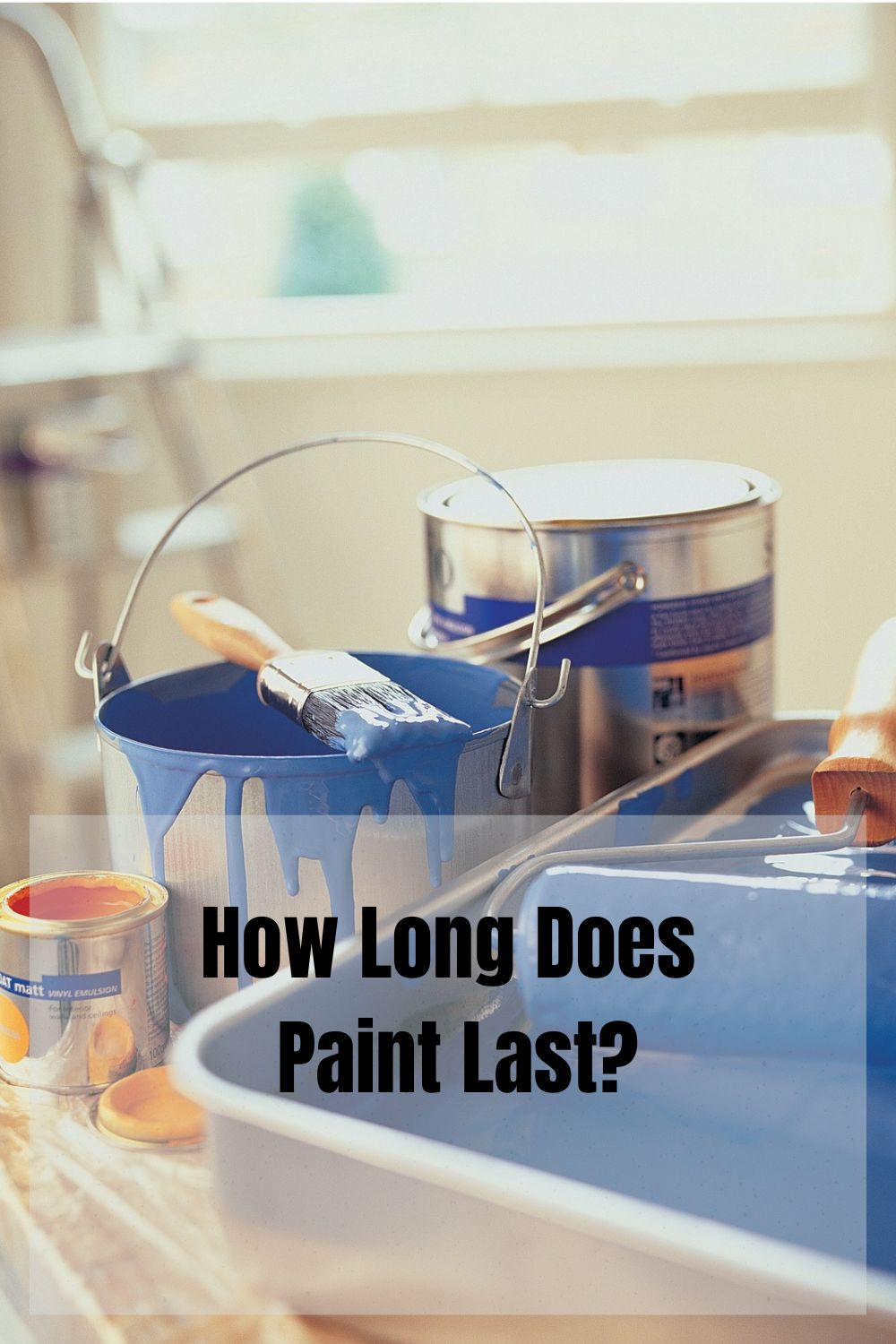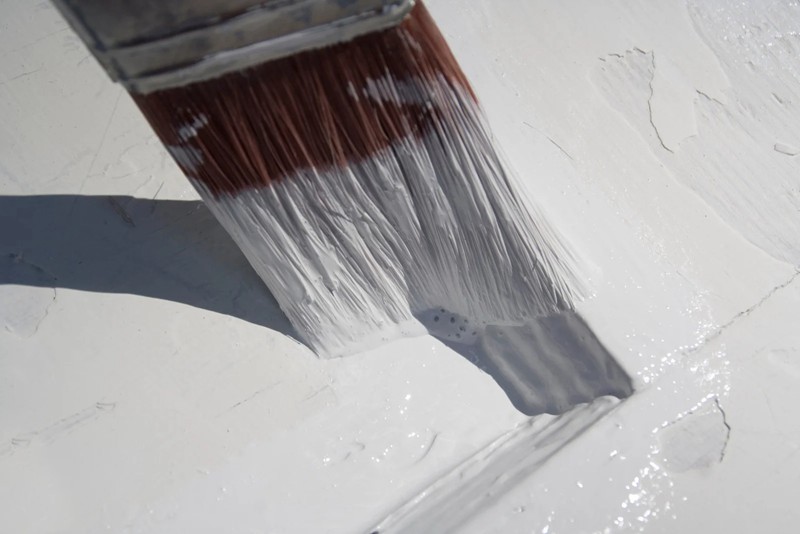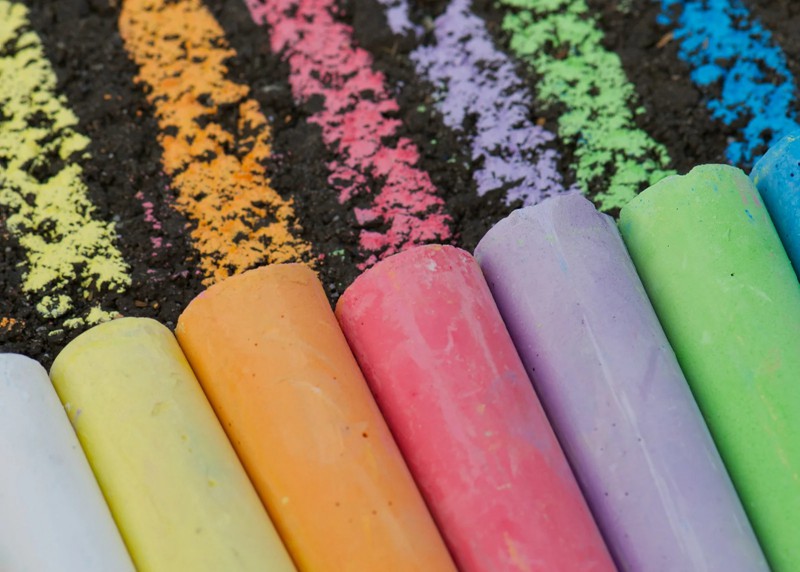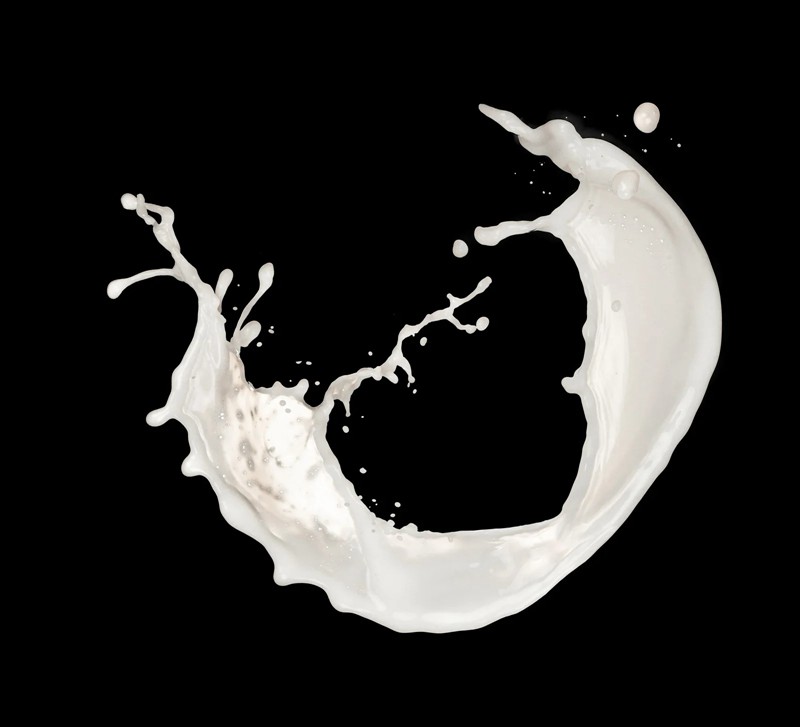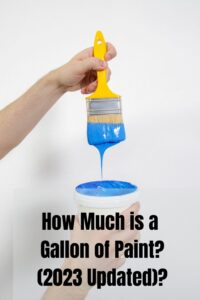Many people believe that paint can last forever; this is a common misconception. You probably have DIY plans for the old can of paint that’s sitting in your garage. But have you ever wondered, “How long does paint last?” Being in the dark about the answer is a surefire recipe for disappointment.
All paint eventually degrades, but the average lifespan is five years for unopened and two years for opened cans. However, this greatly depends on how the paint is stored.
Different types of paint have varying shell lives: latex/acrylic paints have a 2–10 year lifespan, oil-based paints have a 2–15 year lifespan, chalk paint has a 1–5 year lifespan, and milk paint has a 1-2 week lifespan.
In this article, you’d learn how long paint can last on the shelf, tricks to making it last longer, storage advice, and warning signs that paint is getting close to expiration. You can use the following information to decide whether a trip to the store is an option.
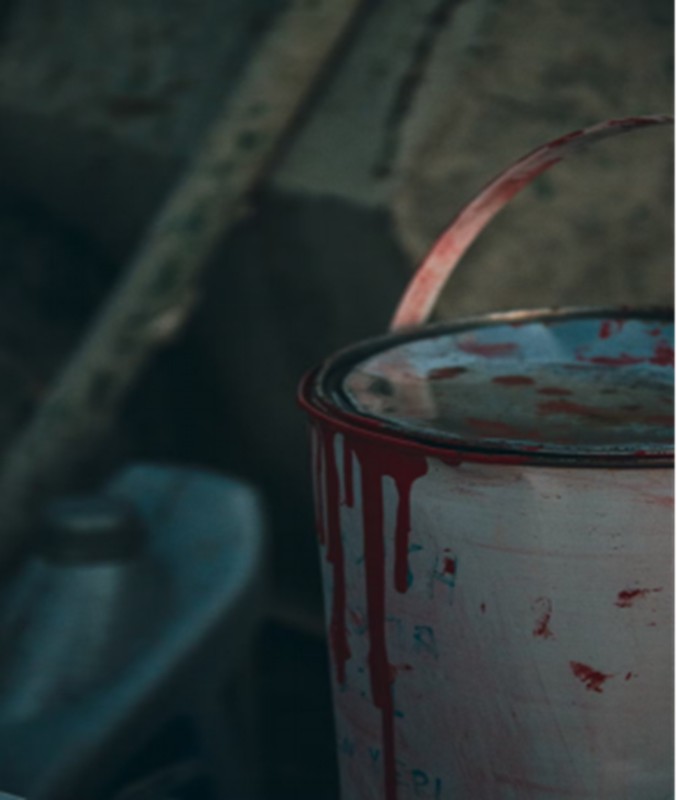
Table of Contents
Does Paint Ever Go Bad?
Since nothing lasts forever, paint does eventually go bad. The location where the paint is stored, whether it has been opened or not, the type of paint, environmental factors, etc., all play a role in determining whether the shelf life is shorter or longer than the generally accepted time.
Why Does Paint Expire?
Paint goes bad because it is old, first and foremost. It certainly is not created to last for all time. As time goes on, the chemicals used to make it will alter. Also, when foreign organisms like bacteria find their way into the paint can, the pH is disturbed, which leads to further reactions that speed up its aging.
Here are some other reasons for paints to go bad:
1. The paint is left open after use.
An unopened paint can typically have a shelf life of about ten years after the date of manufacture. If the paint has been opened in the past, this lifespan drops dramatically. This results from the paint’s exposure to air, causing an imbalance in the ratio of semi-solids to liquids.
Exposure to air also results in lumps in the skin, making the skin thicker and more prone to breaking. Sometimes these lumps can be smoothed out by stirring, and other times, they remain to make the paint unusable.
Bacteria, fungi, molds, and yeast find paint to be an excellent breeding ground when they find their way into a can that has not been correctly sealed. They cause discoloration, rancid smell, and change in viscosity.
2. Paint is stored under unfavorable conditions:
A cool, dry place, away from direct sunlight and extreme weather conditions, should be considered when storing paint, as always stated on the can. To avoid such conditions from affecting the paint negatively, you can rule out the garage (too cold) and the attic (too hot) as storage locations.
If stored in a place that’s not climate controlled, the molecular structure of the paint will be broken. It is also advisable to store it at the top of a shelf to prevent mold formation and being tampered with by children.
Signs to Determine If Your Paint Has Gone Bad
Paint cans come with expiration dates, which can provide general information on whether your paint has gone bad. However, like stated earlier, the paint can last longer or expire earlier than the stated date.
There is also the added scenario of scratched-out or faded expiry dates. In such a case, you must examine the paint yourself to identify the signs of expired paint. Some signs to look out for include:
● Presence of Mildew or Mold
When you notice mold formation on the paint’s surface or around its walls, it indicates bacteria contamination in the paint. Sometimes, bacteria can get into the paint from the factory before sealing, or when left to sit unopened for a long time, the bacteria may multiply.
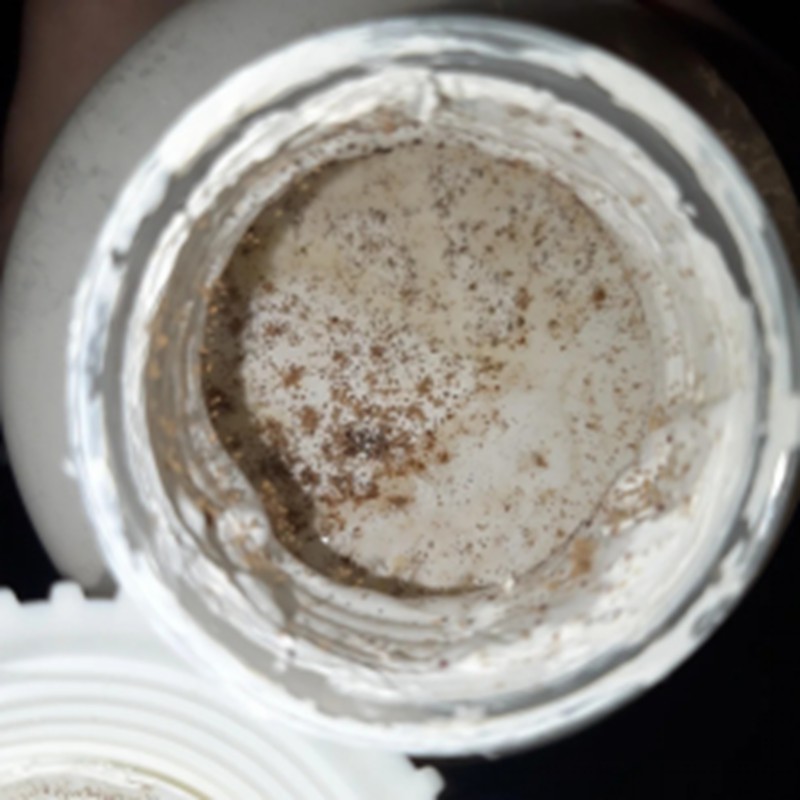
● Rancid Smell
You can tell that paint has gone wrong by its smell. Bad paint smells like sour milk or worse. Typically, the chemicals in paint have a smell that some people cannot stand, but the smell that is given off from harmful paint is due to bacterial activity.
A rancid smell from the paint can be commonly noticed in paint types with little to no VOCs, as there are no solvents to stabilize it and fight against the bacteria. Make no mistakes, foul-smelling paint is terrible and should be appropriately disposed of.
● Separation of Paint
When the paint is left to sit for a long time without any disturbance, its contents are bound to separate into the solids at the bottom and the liquid at the top. Freezing of paint can leave it in a permanently separated state.
This situation might be expected in most cases and should be rectified with a stirring stick. However, there are times when no amount of stirring can mix the components evenly. Well, then, it’s time to let go.
● Top Layer of Skin
A dry layer of paint can form on the paint’s surface when it hasn’t been used in a while. It can be removed carefully by peeling it back with your stirrer. Then mix the contents to see if the paint is still good.
● Lumpy or Chunky
Lumps and chunks in old paint is bad news. They can appear due to freezing temperatures, which cause freeze-thaw cycles.
The paint can be disposed of, but you can try stirring. If it does not work, you can strain the paint using a strainer. Lumpy paint makes it difficult to attain a smooth finish when used.
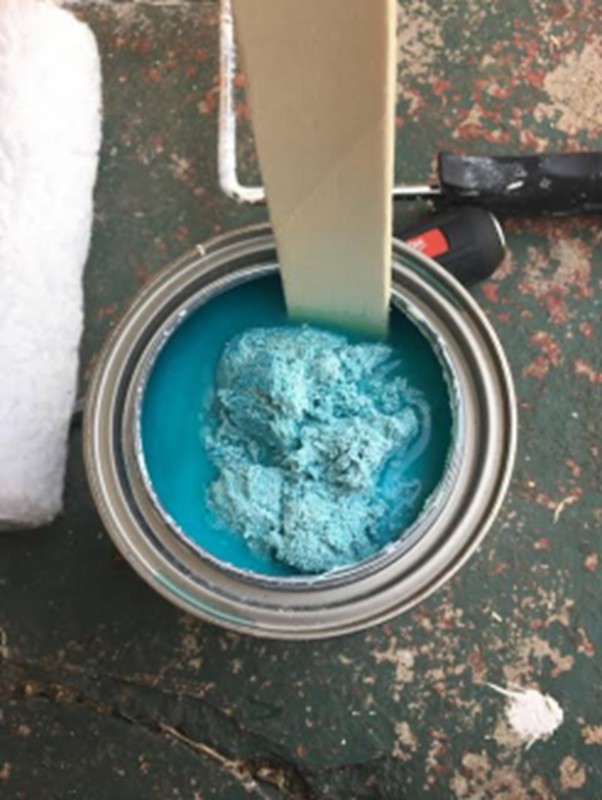
● The Color
Observing the color of the paint is another way to ascertain the health of your old paint. If it doesn’t blend into one consistent color after stirring it for some time, the paint has gone bad.
Also, if the color obtained is different from the original color, it is advisable to properly dispose of the paint and not reuse it. There are various kinds of paint, and they all have varying lifespans depending on the type and how they are stored.
Types of Paint
It is essential to know the type of paint sitting in the garage to determine how long it’s suitable. Different paints have different shelf lives and responses to environmental conditions.
Oil-based Paint
Oil-based paint is made with natural oils (like linseed) or synthetic alkyds. The coloring agent is mixed in with the oil to achieve the vibrant colors characteristic of oil-based paints.
There is also a considerable amount of volatile organic compounds (VOCs) in oil-based paints and many chemicals, making them unadvisable for interior design.
The oil base is a natural preservative for the paint, especially when unopened. It maintains the stability of the mixture and tightness of bonds for a long time.
Compared to other types of paint, oil-based paints are the best where longevity is concerned. An unopened can of paint will remain intact for about 15 years. The paint can last for a decade when it has been opened and properly resealed.
When oil-based paint is left on the shelf for a long period of time, the contents separate, with the solids falling to the floor of the can and the oil floating on the surface. In this case, the paint may not be bad. Stir it and observe its consistency before deciding.
Fun Fact: If oil-based paint is left partially open, it will begin to dry out, which would cause a release of toxic fumes that can lead to a fire when exposed to heat.
Latex Paint
Latex paint is a water-based paint that is pleasant to work with, mainly because it lacks volatile organic compounds (VOCs). It can be used for interiors and is less dangerous than oil-based paints.
There are usually not many additives, meaning there are no bonds to be broken as time passes. There is also a lack of binding agents to hold everything together. Therefore, latex paints can survive unopened for 6–10 years.
Depending on the type and quality of ingredients and how well the paint is stored, latex paint, when opened, can last for 2–5 years on average.
When storing latex paint, freezing temperatures should be avoided, as it is water-based and more prone to experiencing a freeze-thaw cycle, leading to lumps and an inconsistent texture.
Chalk Paint
Chalk paint is a latex-based paint mainly used for a vintage or retro finish. It is applied in a similar way to how ordinary latex paint is but is excellent for smaller painting projects like retouching the frames.
When stored properly, chalk paint can last for up to 5 years. Whereas if left exposed to air, it will dry out faster.
Milk Paint
Milk paint is one of the oldest types of paint in the world. It is made with a milk and lime base and gets its color by suspending pigments. Milk paint has no harmful chemicals, making it ideal for children’s and animal spaces.
Out of all the types of paint, milk paint has the shortest shelf life due to the milk proteins present in it. It can only last for a few days or weeks. The type of milk paint matters a lot. The powdered one can last indefinitely when unmixed, and the canned one must be refrigerated for a week or longer if it is to last.
You can add a chemical called borax to make it last longer. However, this is the type of paint you should only use once because it will likely go bad within two days.
Tips for Storing Paint
From the above indications, you may not be able to use some old paints anymore. However, there is always a second chance to do things better. Here are some tips to help you store your paint properly:
| Storage Tip | Dos | Don’ts |
| Seal properly | ● Scrape dry paint from the rim and surrounding wall, and cover of paint.
● Use plastic wrap to cover the content of the paint. ● Place a block of wood on the cover. ● Use a rubber mallet to tap it down |
● Avoid using a screwdriver and hammer to prevent dents in the can.
● Close with only the lid. |
| Location | ● Indoors; keep it in a basement, closet, or storage unit. | ● In garage
● Attic ● Outside, in direct sunlight |
| Temperature | ● Between 60 and 80 F, which is at room temperature for oil and latex paints
● Milk paint should be refrigerated when not in use. |
● Freezing temperature, 32 F
● Close to a heat source |
| Container size | ● Use a smaller airtight paint container if the quantity of paint has decreased. | ● The same container for a small quantity of paint. |
| Labeling | ● Use a permanent marker to write down details of the paint, including the color, room of application, date sealed, etc.
● Smear a bit of paint on the body of the can for easy identification. |
● Leave the can without any information. |
Frequently Asked Questions
Can Paint be Stored In a Plastic Container?
Yes, plastic containers are safe, provided it is rigid and sealed properly.
How Safe are Old Paints?
Very unsafe. Paints made before 1978 were made with lead, and latex paints before 1990 were made with mercury. These are very harmful to health, especially when they expire.
How Can I Dispose of Old Paint?
You can take them to the paint disposal facility. Ten states, including Washington D.C., have paint take-back programs. Look for the one near you and act accordingly. If the paint is still useful, you can donate it.
Final words
It is usually a good idea to store leftover paint for unexpected or expected needs when it arises since quality paint can be expensive. However, the longevity of the paint determines its availability when it’s needed.
Therefore, knowledge about the shelf life of different paints and how to store them properly is an even better idea. If you have further inquiries about this topic, kindly leave them in the comment section.

